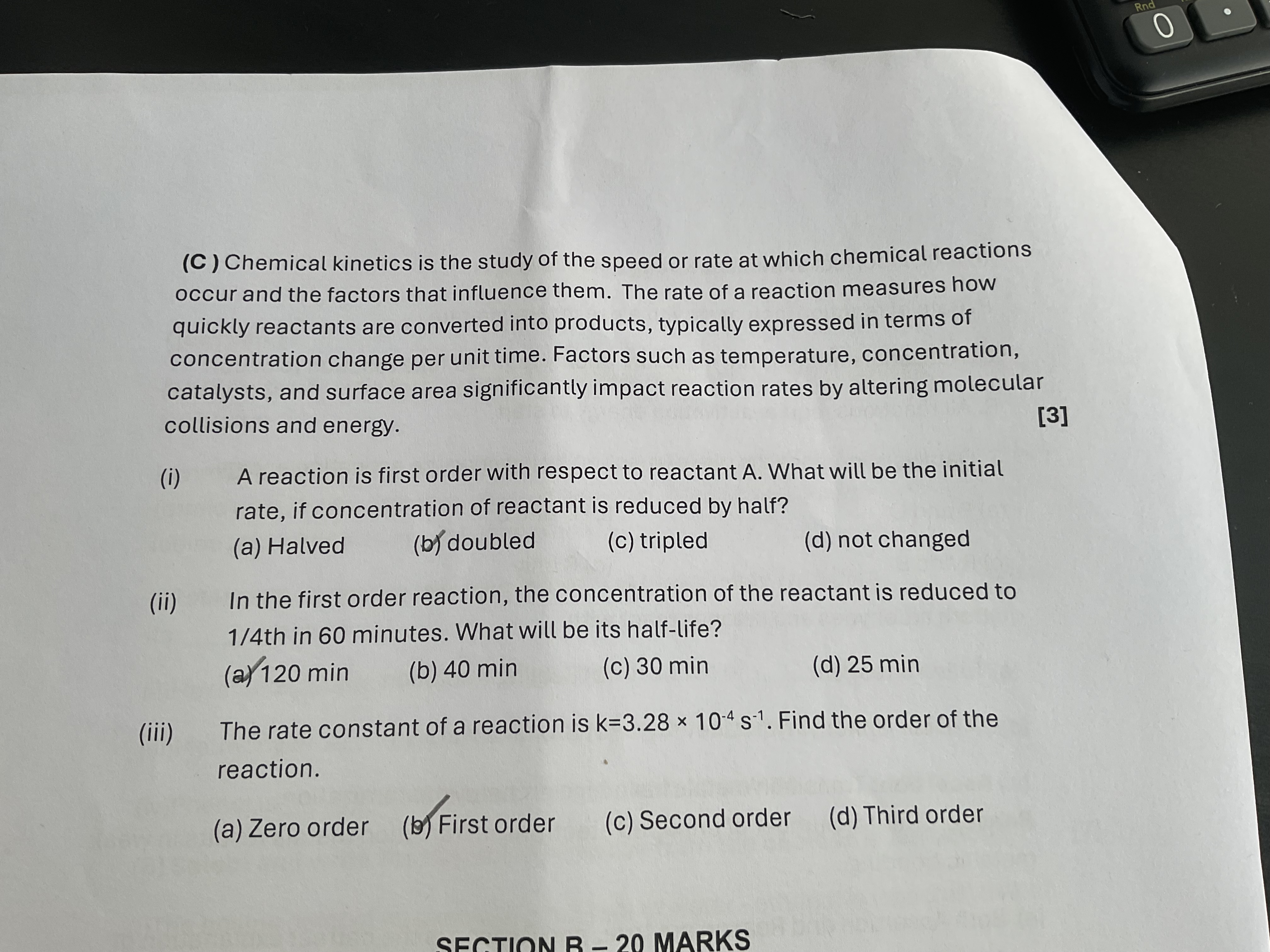i) A reaction is first order with respect to reactant A. What will be the initial rate if concentration of reactant is reduced by half? ii) In the first order reaction, the concent... i) A reaction is first order with respect to reactant A. What will be the initial rate if concentration of reactant is reduced by half? ii) In the first order reaction, the concentration of the reactant is reduced to 1/4th in 60 minutes. What will its half-life? iii) The rate constant of a reaction is k=3.28 × 10⁴ s⁻¹. Find the order of the reaction.

Understand the Problem
The question is asking about chemical kinetics and the effects of concentration changes and reaction orders on the rate of reactions. Specifically, it addresses how a first-order reaction behaves when the concentration is halved, calculates the half-life of a reactant, and determines the order of a given reaction based on its rate constant.
Answer
i) Halved. ii) 40 min. iii) First order.
i) Halved. ii) 40 minutes. iii) First order.
Answer for screen readers
i) Halved. ii) 40 minutes. iii) First order.
More Information
For first-order reactions, the rate is directly proportional to the reactant's concentration, so halving the concentration halves the rate. The half-life is constant, determined from the time it takes for the reactant concentration to decrease to a fraction of its original. The unit of k identifies the reaction as first-order.
Tips
Confusing rate with concentration changes is common. Remember, for first-order reactions, rate changes proportionally with concentration changes.
Sources
- 4.5: First Order Reaction Half-Life - Chemistry LibreTexts - chem.libretexts.org
- In the first order reaction, the concentration of the reactant is reduced... - toppr.com
AI-generated content may contain errors. Please verify critical information